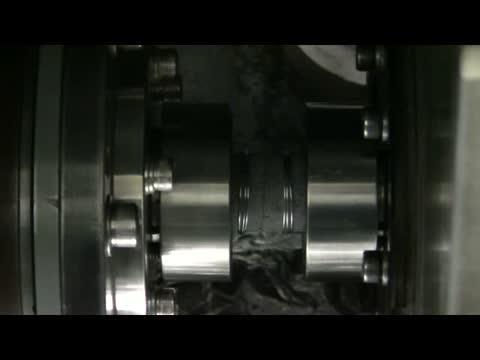A new discovery in the study of how lava dome volcanoes erupt may help predict how a volcanic eruption will behave.
Volcanologists say a process called frictional melting plays a role in determining how a volcano will erupt, by dictating how fast magma can ascend to the surface, and how much resistance it faces en-route.
The process occurs in lava dome volcanoes when magma and rocks melt as they rub against each other due to intense heat. This creates a stop start movement in the magma as it makes its way towards the earth's surface. The magma sticks to the rock and stops moving until enough pressure builds up, prompting it to shift forward again, a process called stick-slip.

Using friction experiments University of Liverpool scientists have shown that frictional melting plays a role in determining how a volcano will erupt. Credit: Dr. Jackie Kendrick
University of Liverpool
volcanologist, Dr Jackie Kendrick, who lead the research said, "Seismologists have long known that frictional melting takes place when large tectonic earthquakes occur. It is also thought that the stick-slip process that frictional melting generates is concurrent to 'seismic drumbeats' which are the regular, rhythmic small earthquakes which have been recently found to accompany large volcanic eruptions.
"Using friction experiments we have shown that the extent of frictional melting depends on the composition of the rock and magma, which determines how fast or slow the magma travels to the surface during the eruption."
Analysis of lava collected from Mount St. Helens, USA and the Soufrière Hills volcano in Montserrat by volcanology researchers from the University's School of Environmental Sciences revealed remnants of pseudotachylyte, a cooled frictional melt. Evidence showed that the process took place in the conduit, the channel which lava passes through on its way to erupt.
Kendrick added, "The closer we get to understanding the way magma behaves, the closer we will get to the ultimate goal: predicting volcanic activity when unrest begins. Whilst we can reasonably predict when a volcanic eruption is about to happen, this new knowledge will help us to predict how the eruption will behave.
"With a rapidly growing population inhabiting the flanks of active volcanoes, understanding the behavior of lava domes becomes an increasing challenge for volcanologists."






Comments